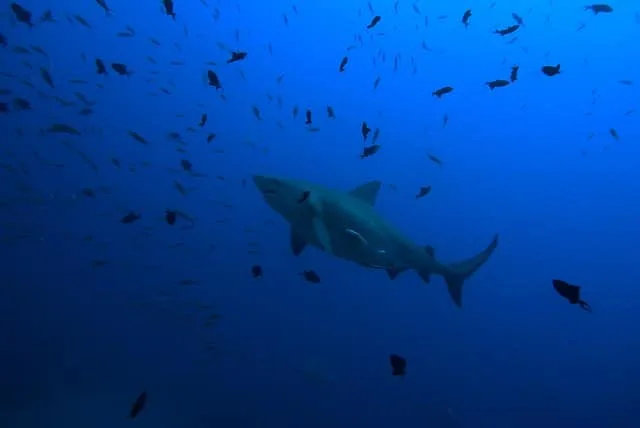Do you want to look for the best places to dive with bull sharks? Bull Sharks are said to be one of the most dangerous sharks for men around the globe.
Out of the 400 or so species of sharks, only a handful is commonly responsible for most shark attacks on people. Among great whites and tigers, the Bull shark is considered one of the most dangerous sharks on our planet.
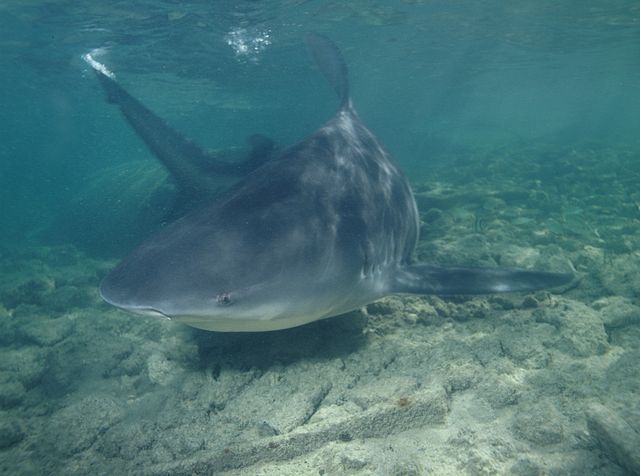
However, please keep in mind there is less than one bull shark per year on a human, making the risk of an attack almost 0%.
Although it might initially feel scary, I think the incredible experience far outweighs the fear. There’s nothing quite like admiring mother nature’s impressive creations face to face.
We have researched for you the significant facts about these animals. Read here what makes bull sharks so unique, why they are likely involved in shark attacks, and, most importantly, where you can experience a thrilling dive adventure with this species.
Either jump to your favorite section below or read the entire article at full length.
If you would like to have a sneak peek at where you can dive with bull sharks, take a look at this map:
Get to know Bull Sharks
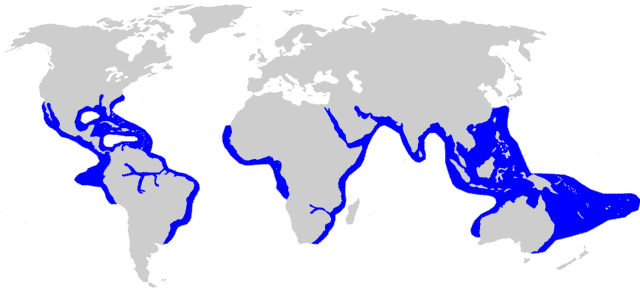
The bull shark (Carcharhinus leucas) is also known as the Zambezi or Lake Nicaragua shark. These two last names stem from the places where bull shark populations occur.
This species belongs to the family of the Requiem Sharks (Carcharhinidae), which comprises of live-bearing sharks from the warmer oceans, such as the tiger shark or the grey reef shark. The bull shark owes its name to its short and robust body shape. It has an unusual habitat for sharks since it is found in freshwater and saltwater.
Bull sharks, due to their size and aggressiveness, are among the most impressive shark species that demand human respect. Bull sharks and their predecessors have inhabited the oceans for over 400 million years.
To remind you of the importance of safety, read about a kayaker’s close encounter with a basking shark.
How to identify a bull shark?
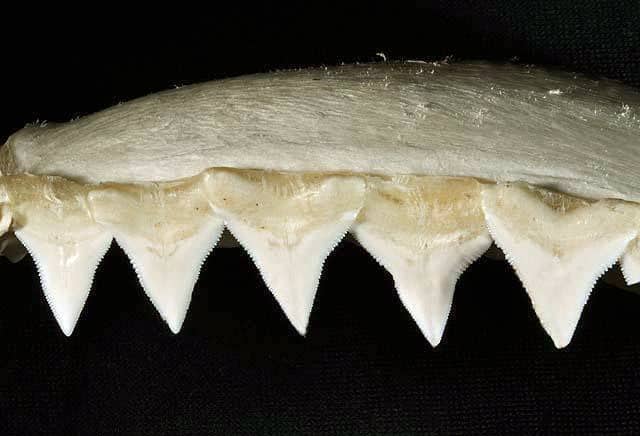
The most striking feature apart from the bulky body with the blunt and short muzzle, which makes bull sharks distinguishable from other sharks, is the right-angled first dorsal fin, shaped like an equilateral triangle.
Other specifics of its appearance are, for instance, the triangular teeth (similar to the ones of the great whites), the small rear dorsal fin located immediately in front of the tail, and the small eyes compared to other sharks.
The upper side of its body is dark grey, and the underside is lighter and can be almost white. The ends of the fins are black when young, but this coloring disappears with age.
Click here to get to know another type of shark, namely the Spotted Gully Shark.
Key Facts of Bull Sharks
In contrast to other shark species, female bull sharks are larger and heavier than males!
| Average length | Females: 7.9 ft Males: 7.4 ft |
| Maximum length | Approximately 11,5 ft |
| Typical weight | Females: 290 lbs Males: 209 lbs |
| Maximum weight | Exceeding 660 pounds |
| Bite force | Up to 6,000 newtons (1,330 lbs) |
| Diet | A varied diet, ranging from bony fish, mollusks, and crustaceans to other shark species (they are even cannibalistic) and rays. |
| Young | Live-born animals are approximately 2.3 ft long |
| Pregnancy Period | 10 – 11 months |
| Sexual Maturity | Females at age 10 – 14 years, males at 18 years or older |
How the Bull Shark Compares to Other Sharks
| Shark Type | Average Length (feet) | Average Weight (pounds) |
|---|---|---|
| Whale Shark | 32-40 | 20,000-40,000 |
| Great White Shark | 15-20 | 2,000-5,000 |
| Tiger Shark | 10-14 | 850-1,400 |
| Mako Shark | 10-12 | 132-298 |
| Hammerhead Shark | 11-13 | 500-1,000 |
| Bull Shark | 7-11 | 200-500 |
The Best Places to Dive with Bull Sharks
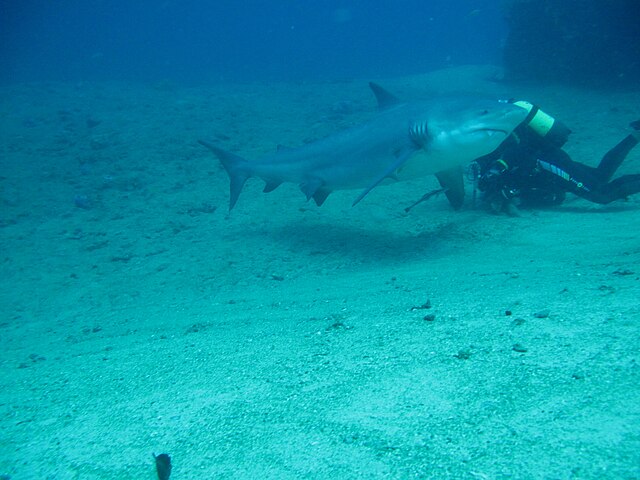
We have researched comprehensively to find you the best spots to dive with bull sharks. In any event, all such shark dive trips require from you in general:
- certification of Open Water Diver or a similar qualification
- the ability to keep a good buoyancy control and air consumption
Please discuss all further requirements with the dive team of your choice.
Some of the considerations you might want to look into when searching for the right dive center for you are the following questions:
- Do I want to meet Bull sharks in a cage-free environment or prefer the added safety of a cage?
- Am I open to diving trips that involve feeding the sharks with chummed food? Here, sharks are attracted to the dive site by exposing a mixture of fish scrap and blood into the water.
Click here if you’d rather get tips on where to dive with Whale Sharks.
Here is our list of the best places to dive with Bull sharks.
#1 Shark Reef Marine Reserve, Fiji
Pacific Harbour is located on the island of Viti Levu and claims to be the bustling adventure capital of Fiji. If you want to meet bull sharks underwater, this is the place to go. It offers probably the best opportunity for Bull shark encounters in the world.
Just a 10-minute boat ride from the docks into Beqa Lagoon, the dive teams will bring you to a community-based marine conservation area called Shark Reef Marine Reserve. Here you can see bull sharks during baited dives regularly together with other shark species and hundreds of fish. Depths are up to 30 m (100ft).
Dive Operators in Pacific Harbour who have a focus on bull shark dives are:
#2 Playa del Carmen, peninsula Yucatan, Mexico
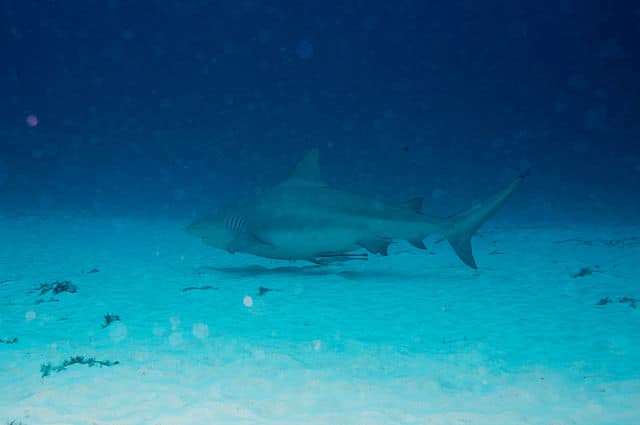
From November until March, it’s the season for bull sharks at Playa del Carmen. Female sharks use the shallow waters in front of the coast as breeding grounds in winter.
Morning dives tend to be the best for encountering bull sharks within the waters. You can book your trip with a dive center in Playa that will take you to the best locations for viewing the sharks. Dive depths range from approximately 25 meters (82 ft) to shallower dives amidst coral reef systems.
Check out the following dive shops:
#3 Santa Lucia, Cuba
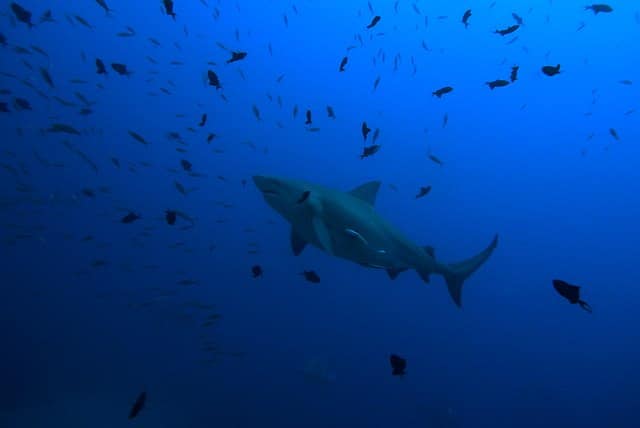
- Santa Lucia Beach Diving
- Shark Friend’s Dive Center
#4 Thailand – Koh Phangan
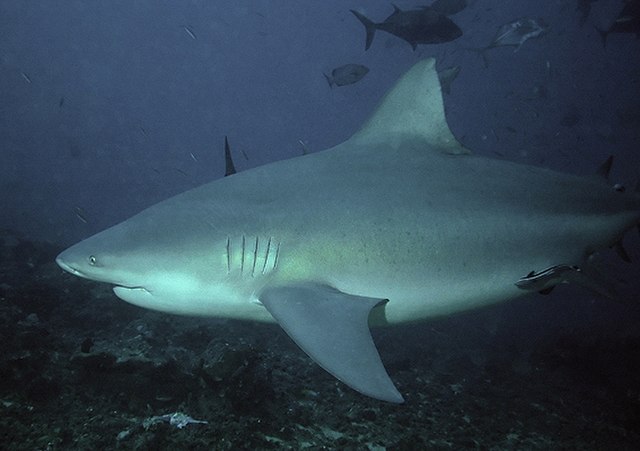
#5 Bat Island, Costa Rica
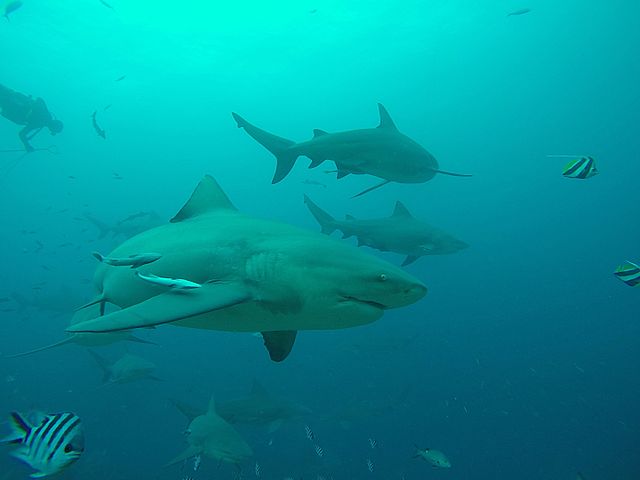
The Costa Rican Pacific has a lot to offer. National parks such as Manuel Antonio, with lush rainforests, world-class beaches, volcanoes and a rich flora and fauna that is second to none, or the Santa Rosa National Park, on whose western tip lie the Islas Murcielagos (Bat Islands – “Bat Islands”). They are a diver’s paradise, where you can not only see bull sharks and giant mantas, but also eels and squid, rich coral reefs and many other underwater creatures.
As this is a protected area, all islands are uninhabited. However, there is a national park station that can be visited and a nearby hill is the ideal place to enjoy a spectacular panoramic view of the islands and the mainland and take pictures.
Especially at the dive site Big Scare you can have a tête-à-tête with bull sharks, which can be up to 3 meters long.
In general, the variety of creatures in the Bat Islands is simply fascinating. There are also various species of rays that glide through the water in groups, or various moray eels, such as the zebra (Gymnomuraena zebra), the jewel (Muraena lentiginosa), the white-mouth (Gymnothorax meleagris) and the star-spotted moray eels (Echidna nebulosa) that snake through the breathtaking coral reef. But also seahorses, squids, frogfish, Pacific swordfish, tunas and schools of lady fish (Elopidae), spade fish (Ephippidae), spear fish (Istiophoridae) and fan or sailfish (Istiophorus platypterus) as well as turtles can pass by.
The most popular diving center to offer bull shark diving on the Bat Islands are:
#6 Great Blue Hole, Belize
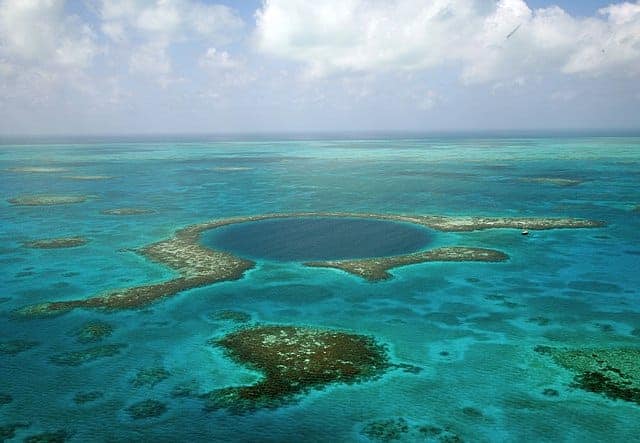
The Blue Hole is an almost perfect circle with a diameter of 274 and a depth of 125 meters. The visible part is slightly smaller than the main body, so it looks like a huge bell on the seafloor. When the Blue Hole was formed about 15,000 years ago, it was still above water. This is evidenced by the beautiful stalactites hanging from the ceiling of the bell.
The dive into the cave is serious and should not be taken lightly. The attractions of the Blue Hole lie deep under the overhangs in the middle of stalactites, and the diver has to stay at a considerable depth above a Blue Water Drop Off “of a few meters”: definitely not a dive for inexperienced divers! The dive starts on a slightly sloping sandy slope leading to the edge of the cave. At a depth of about twelve meters, it will be clarified if the dive will be continued.
From here the wall drops steeply down into the heart of the Blue Hole, then it begins to bend, forming a massive overhang. If you follow it you will soon discover the first stalactites, some of which are up to three meters long and curved in the most beautiful shapes.
If you look down from here, you can clearly see the edge of the next level of the cave, where the bulges of the bell drop several hundred feet down to the sea floor.
With a bit of luck the divers will be examined during the dive by the inhabitants of the Blue Hole – the bull sharks.
The most popular diving centers to offer bull shark diving and tours to the great blue hole in Belize are:
- Ecological Divers
- Belize Pro Diving Center
- Belize Diving Adventure
- Scuba School Belize
- Belize Diving Services
#7 Thailand – Koh Tao
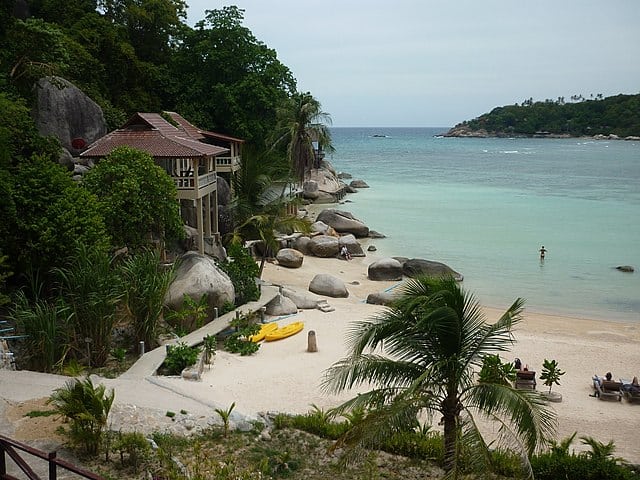
Koh Tao means turtle island and is considered by many as one of the best dive destinations in the Gulf of Thailand. It is surrounded by beautiful coral reefs and some renown dive sites for bull shark sightings such as Chumphon Pinnacle and Sail rock. Sail rock is rated among the most popular dive spots in the Gulf. IIt s situated between the islands of Koh Tao and Koh Phangan. Its maximum depth is at 47 m (154 ft). There are lots of dive centers in Koh Tao.
Here are a few of them to be checked out and which seem to be the most promising in terms of diving with bull sharks.
How About More Sharks?
We hope that you’ll enjoy your encounter with the beautiful Bull Shark! I for one do not regret putting shark diving on my bucket list; it was an absolutely unforgettable experience.
If you are interested in reading about more sharks, we recommend you look at our article about the Best Places to Dive with Hammerhead Sharks. You might also enjoy our post on how a dolphin dodges an attack by a shark.
- Top 5 Rarest Animals in the World - April 15, 2024
- Mongoose Meets One Of The Deadliest Snakes Alive - April 8, 2024
- Watch: Komodo Dragon Swallows Baby Goat In Seconds - March 28, 2024

